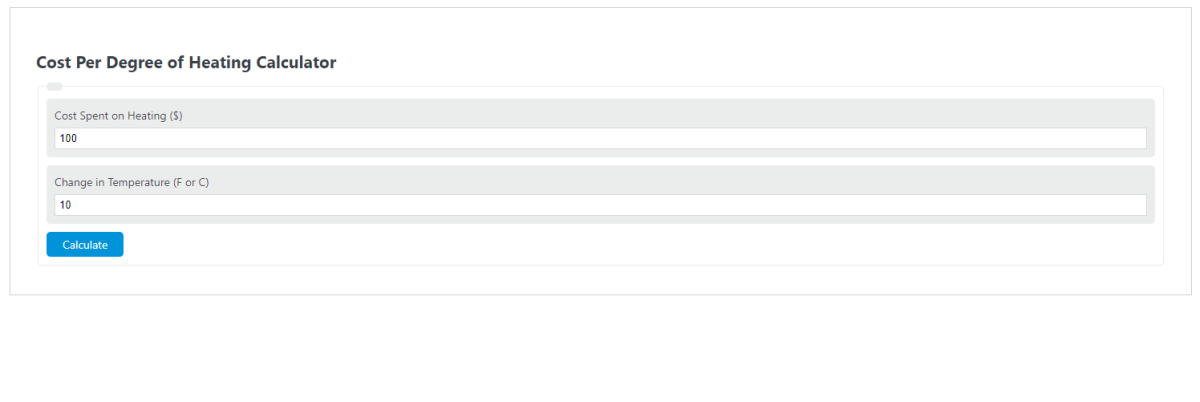Enter the total cost spent on heating and the change in temperature into the calculator to determine the cost per degree of heating.
- HSFP (Heating Seasonal Performance Factor) Calculator
- Utilities Cost Per Month Calculator
- Cost Per Watt Hour Calculator
- Power Factor Calculator
- Heater Size Calculator
Cost Per Degree of Heating Formula
The following equation is used to calculate the Cost Per Degree of Heating.
CPDH = EC / T
- Where CPDH is the cost per degree of heating ($/C or F)
- EC is the total cost spent on electricity used by the heater ($)
- T is the total change in temperature (C of F)
To calculate the cost per degree of heating, divide the cost spent on electricity by the change in temperature.
What is a Cost Per Degree of Heating?
Definition:
A cost per degree of heating is the amount of money spent to raise the temperature of a room by one degree. This will depend on the size of the room, cost of electricity, insulation of the room, and the efficiency of the heater.
How to Calculate Cost Per Degree of Heating?
Example Problem:
The following example outlines the steps and information needed to calculate Cost Per Degree of Heating.
First, determine the total cost spent on electricity used by the heater. In this case, the heater used $3.00 worth of electricity.
Next, determine the total temperature change. The temperature increased by 10 degrees F in this example.
Finally, calculate the cost per degree of heating using the formula above:
CPDH = EC / T
CPDH = 3.00 / 10
CPDH = $.30 /degree F
FAQ
What factors can affect the cost per degree of heating?
The cost per degree of heating can be influenced by several factors, including the efficiency of the heating system, the insulation quality of the room or building, the current cost of electricity, and the outside temperature. A well-insulated room with a high-efficiency heater will generally have a lower cost per degree of heating.
How can I reduce my heating costs?
To reduce heating costs, consider improving your home’s insulation, sealing leaks around doors and windows, using a programmable thermostat to lower the temperature when you’re not home, and maintaining or upgrading to a more efficient heating system. Additionally, wearing warmer clothing and using blankets can reduce the need for higher thermostat settings.
Is it more cost-effective to maintain a constant temperature or to lower the temperature when not at home?
Maintaining a constant temperature can be less efficient and more costly, especially in extreme weather conditions. Lowering the thermostat by 7-10 degrees Fahrenheit for 8 hours a day, such as during work hours or at night, can save up to 10% a year on heating and cooling costs. Using a programmable thermostat can make these adjustments automatically and improve your home’s energy efficiency.
